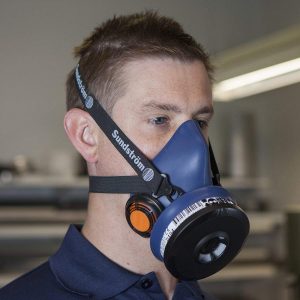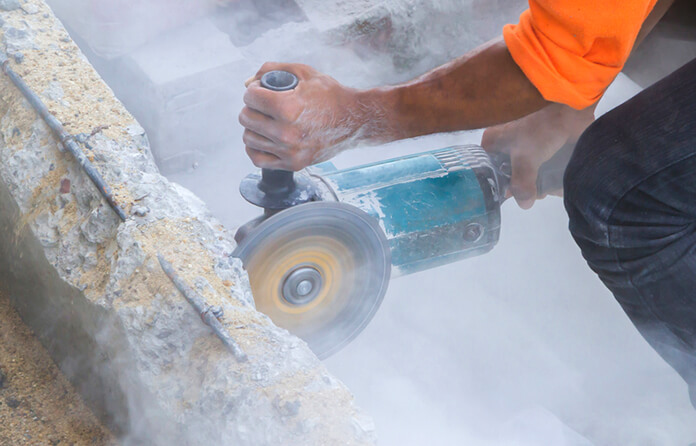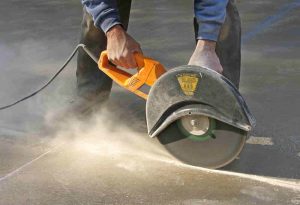Silicosis is an occupational lung disease caused by prolonged exposure and inhalation of crystalline silica dust.
Silica dust are small particles –100 times smaller than a grain of sand–present in materials containing silica. So, what is silica?
It’s a common occurring element in the earth’s crust formed from a combination of silicon and oxygen atoms. It makes up 75% of all element in the earth’s crust. It can be found in:
- Naturally occurring matter e.g. sand, granite, quartz, soil, stone, and clay.
- Products e.g. bricks, tiles, pavers, blocks, concrete, glass and mortar.
- Cement based materials e.g. fibre-cement sheeting.
Activities like crushing, grinding, drilling, breaking, blasting or cutting any of the above materials releases fine silica dust into the air. When inhaled, they find their way to the lungs where they deeply embed themselves. This leads to scarring and inflammation (usually 10mm wide); inhibiting its’ normal functioning and increasing the risk of silicosis.
Signs and symptoms of silicosis include: fever, persistent coughing, chest pain, fatigue, loss of appetite, weight loss, shortness of breath, laboured rapid breathing, darkening and blueing of the skin, and gradual rifts thereafter cracking of the nails.
Silicosis can be classified into 4 groups namely:
- Simple
- Accelerated
- Acute
- Complicated
Simple silicosis occurs 10-40 years after first exposure to low concentration of silica dust.
Accelerated silicosis occurs 5-10 years after first exposure to high concentration of silica dust. It occurs and progresses faster than simple silicosis.
Acute silicosis develops after a few weeks to 5 years of first exposure to extra high concentration of silica gel. It’s highly fatal and often leads to death. Symptoms include shortening of breath, weight loss, and persistent coughing.
Complicated silicosis develops from complication of normal silicosis by lung diseases like TB and smaller inflammations merging together to 1cm. size or more.
DANGERS OF SILICOSIS
Besides silicosis being fatal, it increases the risk of other diseases like tuberculosis, chronic bronchitis, and lung cancer. The worst part is it has no cure. Prescriptions are merely taken to alleviate symptoms and prevent further progression.
PREVENTION
Since silicosis has no cure, the next best option is preventing it from developing in the first place.
- Eliminate silica dust in the air. Use of proper ventilation and air filters does just that. According to Workplace Queensland, the acceptable Workplace Exposure Standard for silica dust is 0.1mg/m³ for an average 8hour shift per 5 working days and shouldn’t exceed that.
- Substitute silica materials for non-silica materials.
- Eliminate activities with risk of exposure. Alternatively, reduce time spent on such tasks.
- Control dust. Use an on-tool extraction tool or water suppression. On-tool extraction extracts dust immediately after it’s released while water suppression soaks the dust in water immediately it’s released.
- Use a personal protective equipment. A well-fitting respirator with at least P1 filtration fit tester is recommended. Nevertheless, a respirator shouldn’t be depended on as the primary prevention method, rather, used together with other controls. See what we have in stock click here!
 IMPORTANCE OF PREVENTION OF SILICOSIS
IMPORTANCE OF PREVENTION OF SILICOSIS
It reduces the risk of fatal diseases like lung cancer, tuberculosis, chronic bronchitis, and silicosis itself. You can easily steer away from all these as long as you follow the tips above.
Conclusion
Silicosis is a fatal disease that can be easily avoided. It’s up to you to take all the necessary precautions. As a wise man once said, “it’s better to be safe than sorry”.
For more information on silicosis, please visit Worksafe Queensland.


